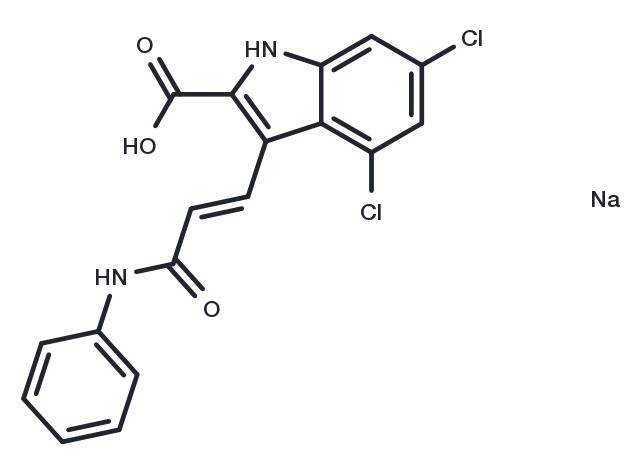Powder: -20°C for 3 years | In solvent: -80°C for 1 year


Gavestinel (GV 150526) is a non-competitive NMDA receptor antagonist that is potent, selective and orally active.Gavestinel binds to the glycine site of the NMDA receptor with a binding affinity (pKi value) of 8.5.Gavestinel is used in acute ischaemic stroke studies.

| Pack Size | Availability | Price/USD | Quantity |
|---|---|---|---|
| 1 mg | In stock | $ 38.00 | |
| 5 mg | In stock | $ 89.00 | |
| 10 mg | In stock | $ 147.00 | |
| 25 mg | In stock | $ 248.00 | |
| 50 mg | In stock | $ 369.00 | |
| 100 mg | In stock | $ 543.00 |

| Description | Gavestinel (GV 150526) is a non-competitive NMDA receptor antagonist that is potent, selective and orally active.Gavestinel binds to the glycine site of the NMDA receptor with a binding affinity (pKi value) of 8.5.Gavestinel is used in acute ischaemic stroke studies. |
| Targets&IC50 | NMDAR:8.5(pKi) |
| In vivo | Gavestinel (800 mg) was administered as a loading dose and followed by either 100 mg, 200 mg, or 400 mg maintenance doses given every 12 h for five doses. The mean terminal half-life ranged from 29 h to 56 h. Gavestinel was extensively bound to plasma protein (median percentage free <0.01). During gavestinel administration, some patients exhibited elevated levels of bilirubin, which may be the result of shared mechanisms of elimination (glucuronide conjugation and excretion in bile).[2] |
| Synonyms | GV 150526, Gavestinel sodium salt |
| Molecular Weight | 398.2 |
| Formula | C18H12Cl2N2NaO3 |
| CAS No. | 153436-38-5 |
Powder: -20°C for 3 years | In solvent: -80°C for 1 year
DMSO: 90.0 mg/mL (226.6 mM), Sonication is recommended.
You can also refer to dose conversion for different animals. More
bottom
Please see Inhibitor Handling Instructions for more frequently ask questions. Topics include: how to prepare stock solutions, how to store products, and cautions on cell-based assays & animal experiments, etc.
Gavestinel 153436-38-5 Membrane transporter/Ion channel Neuroscience iGluR NMDAR Gavestinel sodium GV-150526 GV 150526 Gavestinel sodium salt GV150526 inhibitor inhibit
